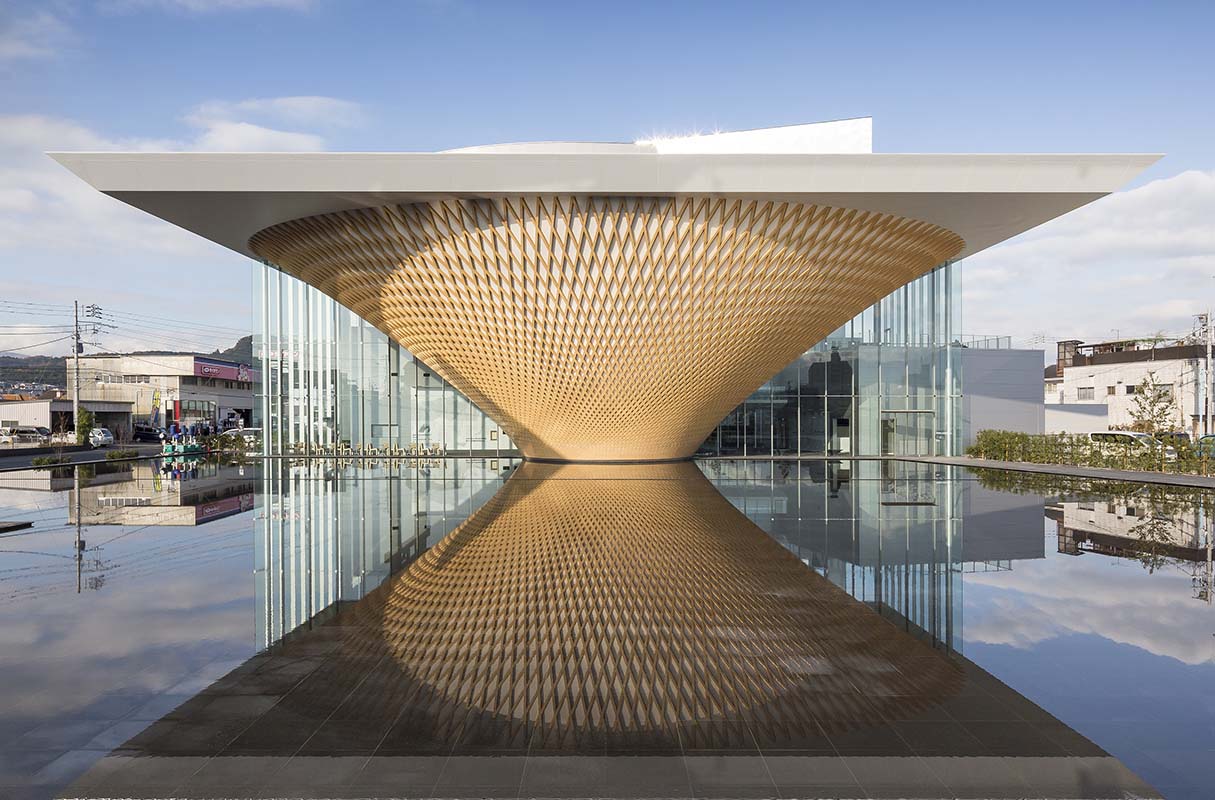Mt.Fuji World Heritage Centre designed by Japanese by Shigeru Ban Architects in Japan with exterior walls of latticed wood, is based on an inverted image of Mt. Fuji, so when it is reflected in the large pool of water in front of it, the reflection looks like the mountain. The Mt. Fuji reflected in the water is a symbolic representation of Fuji as a “mountain of water.” Inside the building shaped like an inverted mountain is a spiral curved slope which leads gradually from the first floor up to the fifth.
Viewing the exhibits as they ascend the slope of the Mt.Fuji World Heritage Centre, visitors can enjoy a virtual taste of the experience of climbing the mountain. When they reach the top (fifth) floor, there is an observation hall with a large picture window offering a breathtaking panoramic view of the real Mt. Fuji, which changes its expression from moment to moment.
Spring water from Mt. Fuji is drawn into the Centre building and used as an air conditioning heat source, and is then channeled to the Reflecting Pool in front of the building, architecturally conveying the cycle of water on Mt. Fuji.
About Shigeru Ban:
Shigeru Ban is a Japanese architect, known for his innovative work with paper, particularly recycled cardboard tubes used to quickly and efficiently house disaster victims. He was profiled by Time magazine in their projection of 21st-century innovators in the field of architecture and design.
In 2014, Ban was named the 37th recipient of the Pritzker Architecture Prize, the most prestigious prize in modern architecture. The Pritzker Jury cited Ban for his innovative use of material and his dedication to humanitarian efforts around the world, calling him “a committed teacher who is not only a role model for younger generation, but also an inspiration.” (Wikipedia)



























Leave a comment